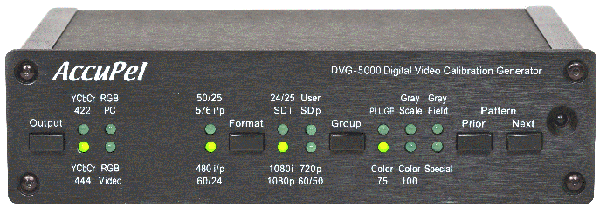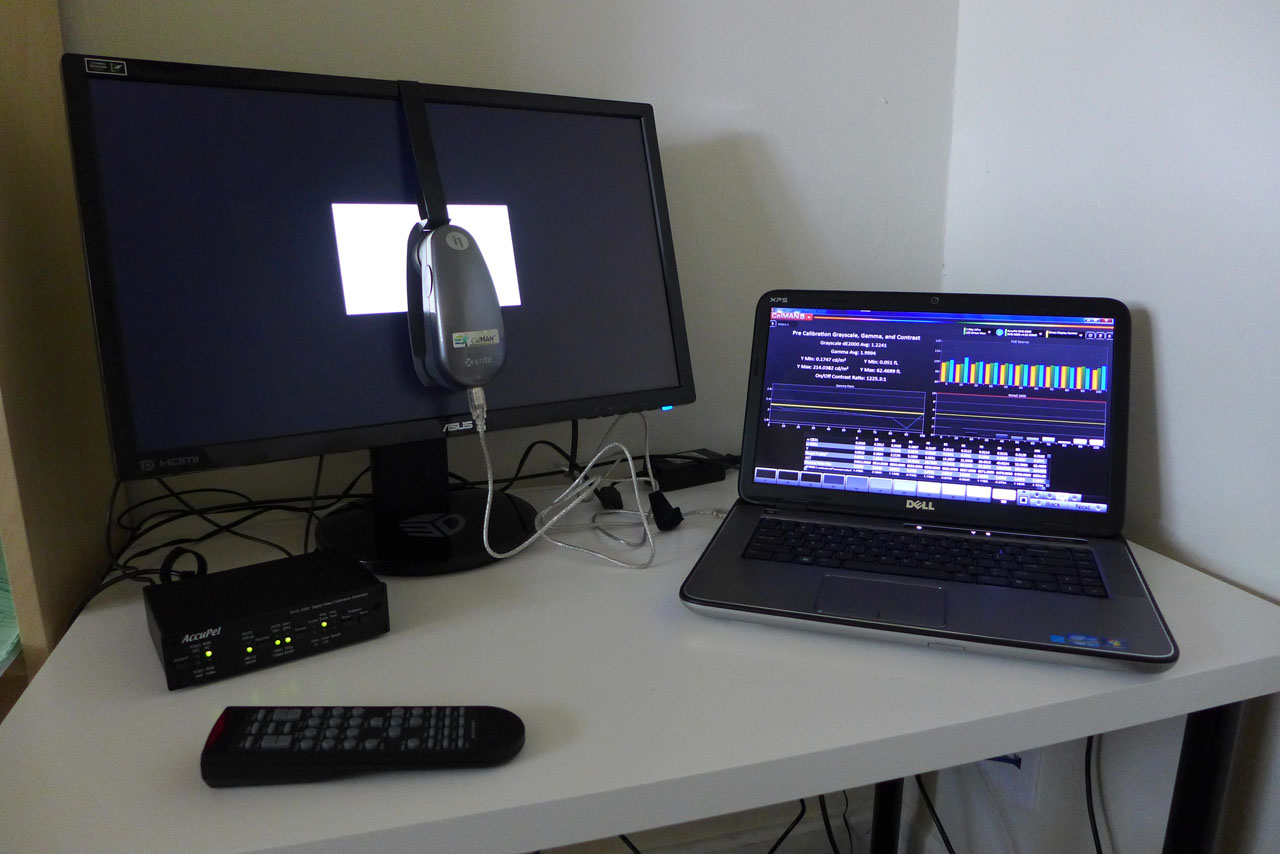AOC E1659FWU And GeChic On-Lap 1502I: Portable Monitors, To Go
AOC and GeChic recently introduced a pair of portable, USB-powered displays. GeChic’s On-Lap 1502I boasts a 1920x1080 resolution and 10-point multi-touch. AOC’s E1659FWU delivers simplicity and a low price. We compare their display performance today.
Measurement And Calibration Methodology: How We Test
To measure and calibrate monitors, we use an i1Pro spectrophotometer and version 5.1.2 of SpectraCal’s CalMAN software.
For patterns, we employ an AccuPel DVG-5000 video signal generator. This approach removes video cards and drivers from the signal chain, allowing the display to receive true reference patterns. Connections are made via HDMI.
The AccuPel DVG-5000 is capable of generating all types of video signals at any resolution and refresh rate up to 1920x1080 at 60 Hz. It can also display motion patterns to evaluate a monitor's video processing capabilities, with 3D patterns available in every format. This allows us to measure color and grayscale performance, crosstalk, and ghosting in 3D content via the 3D glasses.
The i1Pro is placed at the center of the screen (unless we’re measuring uniformity) and sealed against it to block out any ambient light. The Accupel pattern generator (bottom left) is controlled via USB by CalMAN, which is running on the Dell XPS laptop on the right.
Our version of CalMAN Ultimate allows me to design all of the screens and workflows to best suit the purpose at hand. To that end, we’ve created a display review workflow from scratch. This way, we can be sure and collect all the necessary data with a concise and efficient set of measurements.
The charts show us the RGB levels, gamma response, and Delta E error for every brightness point from zero to 100 percent. The table shows us the raw data for each measurement. And the area in the upper-left tells us luminance, average gamma, Delta E, and contrast ratio. The individual charts can be copied to the Windows clipboard to easily create graphics for our reviews.
Every primary and secondary color is measured at 20, 40, 60, 80, and 100 percent saturation. The color saturation level is simply the distance from the white point on the CIE chart. You can see the targets moving out from white in a straight line. The further a point is from center, the greater the saturation until you hit 100 percent at the edge of the gamut triangle. This shows us the display’s response at a cross-section of color points. Many monitors score well when only the 100 percent saturations are measured. Hitting the targets at the lower saturations is more difficult, and factors into our average Delta E value (which explains why our Delta E values are sometimes higher than those reported by other publications).
Get Tom's Hardware's best news and in-depth reviews, straight to your inbox.
Current page: Measurement And Calibration Methodology: How We Test
Prev Page Setting Up The AOC E1659FWI And GeChic On-Lap 1502I Next Page Results: Brightness And Contrast
Christian Eberle is a Contributing Editor for Tom's Hardware US. He's a veteran reviewer of A/V equipment, specializing in monitors. Christian began his obsession with tech when he built his first PC in 1991, a 286 running DOS 3.0 at a blazing 12MHz. In 2006, he undertook training from the Imaging Science Foundation in video calibration and testing and thus started a passion for precise imaging that persists to this day. He is also a professional musician with a degree from the New England Conservatory as a classical bassoonist which he used to good effect as a performer with the West Point Army Band from 1987 to 2013. He enjoys watching movies and listening to high-end audio in his custom-built home theater and can be seen riding trails near his home on a race-ready ICE VTX recumbent trike. Christian enjoys the endless summer in Florida where he lives with his wife and Chihuahua and plays with orchestras around the state.
-
g-unit1111 Interesting, I'm interested in getting one of the USB displays but the resolution is keeping me from purchasing one. I'd like to see how the AOC monitor compares to the ones being offered from Asus, HP, Dell, and so on and so forth.Reply -
mathew7 So....I am looking for a few years for a small (15" would be limit) portable VGA+HDMI monitor (as in not a bulky stand). I don't need FullHD resolution, but it should accept it.Reply
In a related note, I have been thinking about a laptop-styled monitor+keyboard (and maybe mouse/touchpad) but to be plugged into a desktop PC. You know...when you receive a PC case (or go to someone) and have to debug it. But again, 15" is already big (I'm using a 12.5" thinkpad when not at my gaming/workstation PC). -
ceberle You can connect the On-Lap to a phone or tablet via its HDMI/MHL port. The AOC will only work via USB.Reply
-Christian- -
CrisCrossed Two words:Reply
Able HD
http://www.able-hd.com
One of the most funded projects on kickstarter. These guys make portable monitors that are HD and really cheap. Unfortunately, they still have their flaws (the circuit board is exposed and not attached to the screen) but you cannot beat the price/performance. -
g-unit1111 Reply12343796 said:Two words:
Able HD
http://www.able-hd.com
One of the most funded projects on kickstarter. These guys make portable monitors that are HD and really cheap. Unfortunately, they still have their flaws (the circuit board is exposed and not attached to the screen) but you cannot beat the price/performance.
I have to say after reading about these that I do want one. When my laptop's primary display is 1920 x 1080, why would I want to add a second monitor that's 1366 x 720? -
CrisCrossed ReplyI have to say after reading about these that I do want one. When my laptop's primary display is 1920 x 1080, why would I want to add a second monitor that's 1366 x 720?
I'm sorry, I mistyped. The monitor is actually a FHD (1080p) display, and it comes in 15.6 and 17 inch screens. I hope this helps. I'm ordering mine soon to use with a LAN box.




